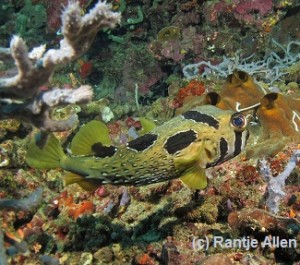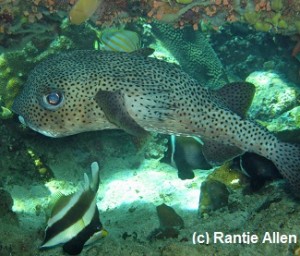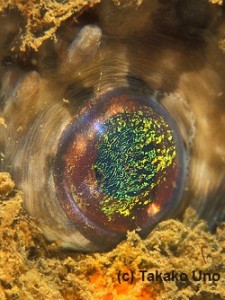Loading content - please wait...
Thysanostoma thysanura Jellyfish in Gorontalo
Thysanostoma thysanura is a large jellyfish rarely seen in Gorontalo waters.
Bushy Oral Arms
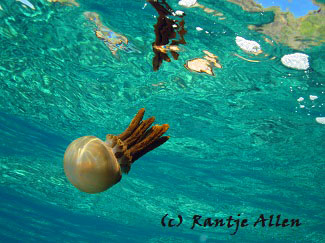
This large jellyfish lives in warm waters from the central Indo-Pacific to Japan. It was named in 1880. The Latin word thysanura means “bristle tails.” This name refers to the large, bushy oral arms that hang from the jellyfish’s central bell. Modern researchers have gathered specimens from Sulawesi, the northern Philippines and the Great Barrier Reef in Australia. Thysanostoma thysanura has been seen at depths reaching 24 meters. In Gorontalo, however, it has only been observed at the surface.
Encounter with Thysanostoma thysanura
Although Miguel’s Diving has been operating in Gorontalo since 2003, we have only encountered Thysanostoma thysanura a few times. After a dive in April 2015, one was swimming around the dive boat. Jellyfish of any kind are usually not present in areas where we dive. Imagine the excitement to see this large and beautiful jellyfish. In our experience
, this jellyfish is a very active swimmer. It pumps water with its bell to move. Its oral arms drag along behind it. Taking photographs was a challenge because it never stayed still. Watch our video!
Jellyfish Facts
Adult jellyfish are called medusa. They have a soft body consisting of a bell with tentacles or oral arms surrounding a central mouth. Solitary medusa, like Thysanostoma thysanura, swim freely in the open ocean.
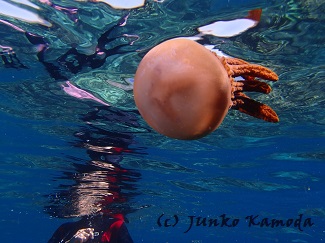
Jellyfish are most famous for the stinging cells contained in their tentacles. The stinging cells are called nematocysts. They are microscopic and sensitive to pressure. Even a causal touch triggers hundreds or thousands of nematocysts. They fire like darts. Jellyfish use them to immobilize prey like small fish.
Some jellyfish are considered dangerous to humans. We have never seen any of these in Gorontalo. Since Thysanostoma thysanura is so large, avoiding it is quite easy. Since this jellyfish is so rare, only a few lucky divers will ever see it. Our jellyfish was kindly identified by Wyatt Patry of Monterrey Bay Aquarium.
Diving in Gorontalo is exciting because of the unusual marine life found here. For your chance to experience the beauty of Gorontalo, please book your dive trip with us.





